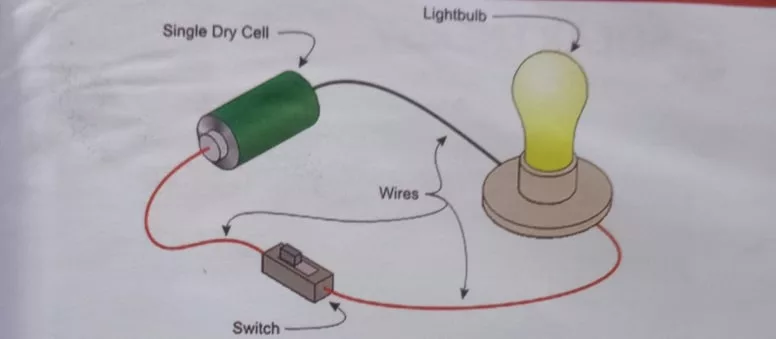Integrated Science Question by Topic | Diffusion and Osmosis, forms of energy and energy transformation, solar energy and photosynthesis

Integrated science question by topic
Integrated Science Question by Topic | Diffusion and Osmosis, forms of energy and energy transformation, solar energy and photosynthesis
These are integrated science question by topic. These are questions that teachers can use to assess their students after teaching and learning the respective topics in integrated science.
Unit: Transport – Diffusion and Osmosis
Part 1: Objective
Integrated science question by topic
1. A semi-permeable membrane is a membrane which
a. all types of particles pass through b. large particles can pass through
c. certain types of particles can pass through
d. no particle can pass through
2. Osmosis occurs in a. all living tissues b. only plant tissues c. only animal tissues d. only non-living tissues
3. Soil water enters roots of plants by a. diffusion b. osmosis c. both diffusion and osmosis d. active transport
Part 2: Written
Integrated science question by topic
4. Enumerate three differences between osmosis and diffusion
5. Define the following terms i. hypertonic solutions ii. hypotonic solution iii. isotonic solution
6. Two containers X and Y each hold one liter of air. X contains 0.4 g of gas and Y contains 0.6 g of the same gas. The two containers are connected together as shown in the following diagram

a. Which way will the gas diffuse
b. After a long period of time, what will be the concentration of the gas (in grams per litre) in each container
7. Briefly explain how osmosis is applied in salted tilapia (koobi) preparation
8. Describe a simple experiment to demonstrate diffusion in water
Unit: Forms of energy and energy transformation
Part 1: Objective
Integrated science question by topic
1. One of the following energy forms does not require a material as a medium
a. light energy b. electrical energy c. heat energy d. sound energy
2. What kind of energy does a hanging fruit possess?
a. gravitational energy b. chemical energy c. potential energy d. kinetic energy
3. Which of the following is a way of conserving electrical energy in the home?
a. iron clothes in bits b. use any light bulb available
c. avoid putting hot food in the fridge d. open windows for fresh air when using air conditioner
Part 2: Written
Integrated science question by topic
4. With the aid of flow charts, show the energy transformation in the following processes
a. photosynthesis b. respiration
5. State the law of conservation of energy
6. A body of mass 2 kg is dropped from the top of a tower of height 100 m. What will be its kinetic energy at the end of 2 seconds? (g = 100 m/s2)
7. a. Define the efficiency of energy converters
b. Explain why the efficiency of energy converters is less than 100%
8. State the energy transformation involved in the burning of candle
9. The diagram below is a simple electrical circuit. With the aid of flow chart, state the energy transformations in the circuit when the key is closed.

Unit: Solar energy
Part 1: Objective
Integrated science question by topic
1. What is the main source of solar energy?
a. fossil fuel b. the sun c. the moon d. biomass
2. Which of the following is the correct energy transformation in solar cell?
a. electrical energy to chemical energy
b. electrical energy to radiant energy
c. radiant energy to electrical energy
d. chemical energy to radiant
3. One reason why environmentalists advocate the use of solar energy instead of fossil fuel as an energy source is that
a. it produces no waste or pollution b. it produces little by-product
c. it provides enormous amount of energy d. it is renewable
Part 2: Written
Integrated science question by topic
4. What is solar energy?
5. Explain the principle underlying the working of a solar cell
6. Account for three practical daily uses of solar energy in the home
7. Outline three advantages of solar energy over the use of fossil fuel as a source of energy
8. Explain how electricity rom solar energy can be harnessed during the night, when there is no sunlight
Unit: Photosynthesis | Integrated science question by topic
Part 1: Objective
Integrated science question by topic
1. Carbon dioxide enters the leaf through the
a. cellulose cell wall b. stomata c. cell membrane d. cuticle
2. The concentration of carbon dioxide in the atmosphere is reduced by
a. photosynthesis b. transpiration c. metabolism d. translocation
3. The by-product of photosynthesis is a. carbon dioxide b. nitrogen c. hydrogen d. oxygen
4. Which of these solutions is used to test for starch
a. ethanol b. hydrochloric acid c. iodine d. methyl-orange
5. The main function of chlorophyll in photosynthesis is to
a. convert glucose to starch b. trap sunlight energy c. split water molecules d. absorb water from the environment
Part 2: Written
Integrated science question by topic
6. What is photosynthesis?
7. Write a balanced equation for photosynthesis
8. State three factors that may affect the rate of photosynthesis
9. Why is photosynthesis beneficial to humans?
10. Briefly describe an experiment to show that carbon dioxide is necessary for photosynthesis
Post Disclaimer
The information contained in this post is for general information purposes only. The information is provided by Educative News and while we endeavour to keep the information up to date and correct, we make no representations or warranties of any kind, express or implied, about the completeness, accuracy, reliability, suitability or availability with respect to the website or the information, products, services, or related graphics contained on the post for any purpose.








